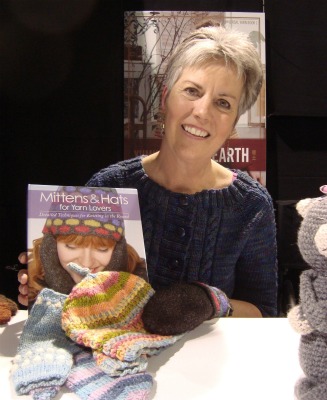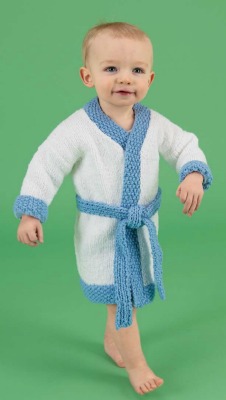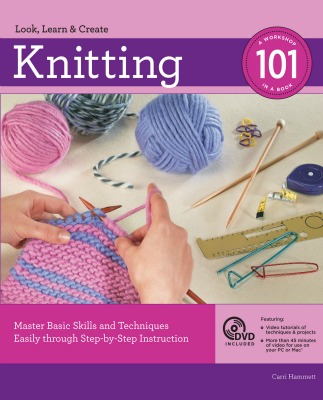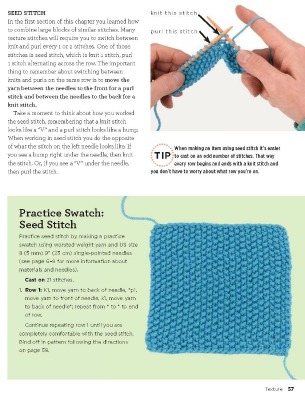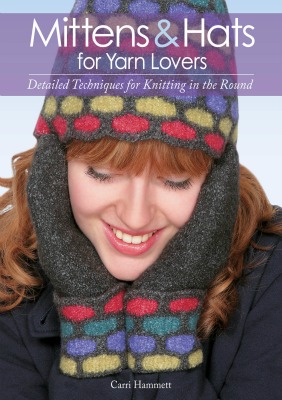Carri: I actually learned to knit when I was a tiny girl (five years old). I gave it up for a long time but I’ve always been involved with fiber in some way – I also love to weave and quilt. About 15 years ago I was laid up after knee surgery and I sent my husband to the craft store to buy me yarn and needles. I started over as a beginning knitter, making cotton dish clothes, but my hands seemed to remember much more about knitting than my brain because I progressed very quickly.
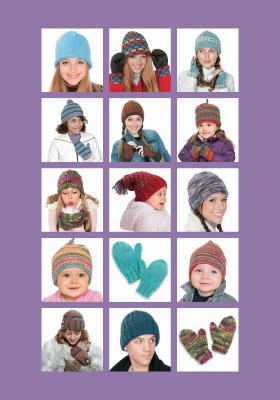
Carri: I find inspiration in several ways. First of all, I clip a lot of images from catalogs and fashion magazines; not just knitwear but also clothing, gifts, jewelery, graphics, etc. I’m completely indiscriminate – if the picture makes me pause, I tear it out. Later, when I’m looking for inspiration, I go through my clippings.
Carri: I think I have an advantage when writing for beginners because I owned a yarn shop for a long time. After all those years of teaching knitters and helping with questions, I have a pretty good sense of how the average knitter learns and progresses. I’m also lucky enough to have a great technical editor, Karen Weiberg, who was a long time yarn shop owner as well. Between the two of us, we work very hard to try and achieve clarity in the directions and explanations. Another thing I did was to ask myself if I was designing the pattern to be as easy as possible for hands and minds that are new to the craft. For instance, I might add an extra row after the cast on to make first row of a lace pattern easier to complete — it’s hard enough making plain stitches in the first row let alone increases and decreases.
Actually writing a beginning knitting book is easy in one sense because, as the author, I don’t have to make any assumptions about how much a knitter may or may not know. Knitting 101 organized itself quite simply around the broad topics that I wanted to teach: Basic Knitting, Texture, Shaping, Knitting in the Round, Color, Lace, and Putting it Together. Once I came up with the chapters, I then designed projects that could be used to learn the techniques.
Carri: Photographs! There are over 400 photographs and images in the book which is many times more than any other book I’ve written. As the author, it is my responsibility to map our each and every photo in terms of location in the book and the content of the image. In addition, if projects are being photographed in various states of completion, then I must have those various samples ready. I would often make two of each design and then we would photograph it in reverse order as I ripped out the stitches. (UC comment: Thanks Carri, for the excellent tip for aspiring writers and tutorial designers!) Once the still photos were completed, I pretty much had to do the same thing a few months later for the videographer when we shot the DVD.
UC: Did you have to find a hand model who knows how to knit?
Carri: Actually, I’m the hand model in this book (except for the cover) and it took us about two weeks working full time to take all the shots. It’s kind of funny though, since I’m not a young person my hands are wrinkled and have various spots and other unsightly marks of age. As soon as a shot was taken in the studio, it immediately went to the computer of an intern who spent quite a lot of time using Photoshop to make my hands look like those of a much younger person. They were always imploring me to put on more hand cream! (UC comment: Wow, what an interesting internship. Now, where is my hand cream??)
UC: How many people are involved with a typical knitting book project?
Carri: When I speak, I like to tell audiences that it takes a village to publish a good knitting book. When I submit a knitting book, I send the finished projects and any step-by-step visual aids to the publisher to be photographed. The actual words are sent in a Word document as an attachment to an email, which is incredibly anti-climatic. As mentioned before, I also supply a very detailed listing describing what every photo and image should be and it’s exact place in the book. Beyond that a bunch of talented people take over, they are: senior editor, art director, book designer, graphic artist, stylist, photographer, technical editor, copy editor, proofreader, and indexer (I’m sure I missed somebody).
I’m very grateful to all of them in their efforts to make me look good!

UC: What was it like making the DVD for Knitting 101?
Carri: Most of the talking in the DVD is done using a voice-over that I recorded after the “film” was shot. We were on location at the yarn shop I used to own (with new owner Cynthia Cushing) and needed to find a place to record the voice-over. We thought of going to an empty office but it turned out that the best place for making the recording was in the yarn storage room at the shop. It turns out that shelves piled high with bags of yarn provide the perfect place for getting great sound quality. The videographer and I spend a day crammed into an aisle in the storeroom and the employees basically had to climb over us whenever they needed to get something. It was worth it, the soundtrack sounds great! (UC comment: Finally, a use for my accumulated yarn staff: a homemade sound booth!)
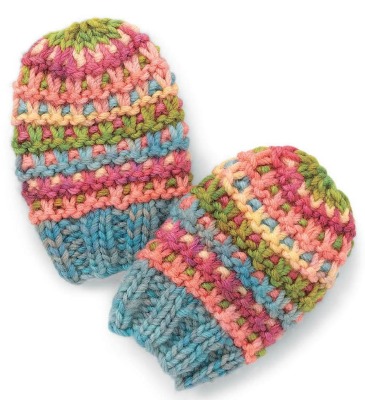
Carri: Well, my desert island knitting books (reference books that I couldn’t live without) are:
- Vogue Knitting: The Ultimate Knitting Book
,
- Barbara Walker‘s Treasury of Knitting Patterns (volumes 1
, 2
, 3
, and 4
),
- and Ann Budd‘s Knitter’s Handy Book Of Patterns
and Knitter’s Handy Book of Sweater Patterns
.
The books that you will never find me selling on Ebay are:
Carri: Living the dream is fraught with good news and bad news. The best part of the good news is that you get to spend full time as the member of a creative and generous community. People often assume the yarn shop owner does all the teaching but, in fact, I think I learned more and was inspired more by my customers than they were by me. If, as a yarn shop owner, one is committed to providing a supportive environment for learning then you can often be blessed by seeing how knitting can change a person’s life. The craft of knitting can be comforting and the community of knitters can be so supportive. The huge amount of yarn combined with the constant flow of knitters can be a powerful inspirational force.
The bad news? That requires a reality check. A yarn shop is a business and you have to learn about and manage cash flow, inventory, expenses, employees and so much more. I remember someone once said to me, “I would love to have your job so I could sit and knit all day.” Nothing could be further from the truth. In over seven years of owning a yarn shop, I never once sat down in the shop to knit for pleasure. In fact, I had much less time for personal knitting, because I was so busy running a shop and writing books. Finally, sadly, running a yarn shop is not something you do to get rich. The rewards are abundant but only a few yarn shops are wildly successful in terms of profit.
Thanks so much for stopping by for an interview, Carri! Best of luck on your fifth book, which is currently in the works!

